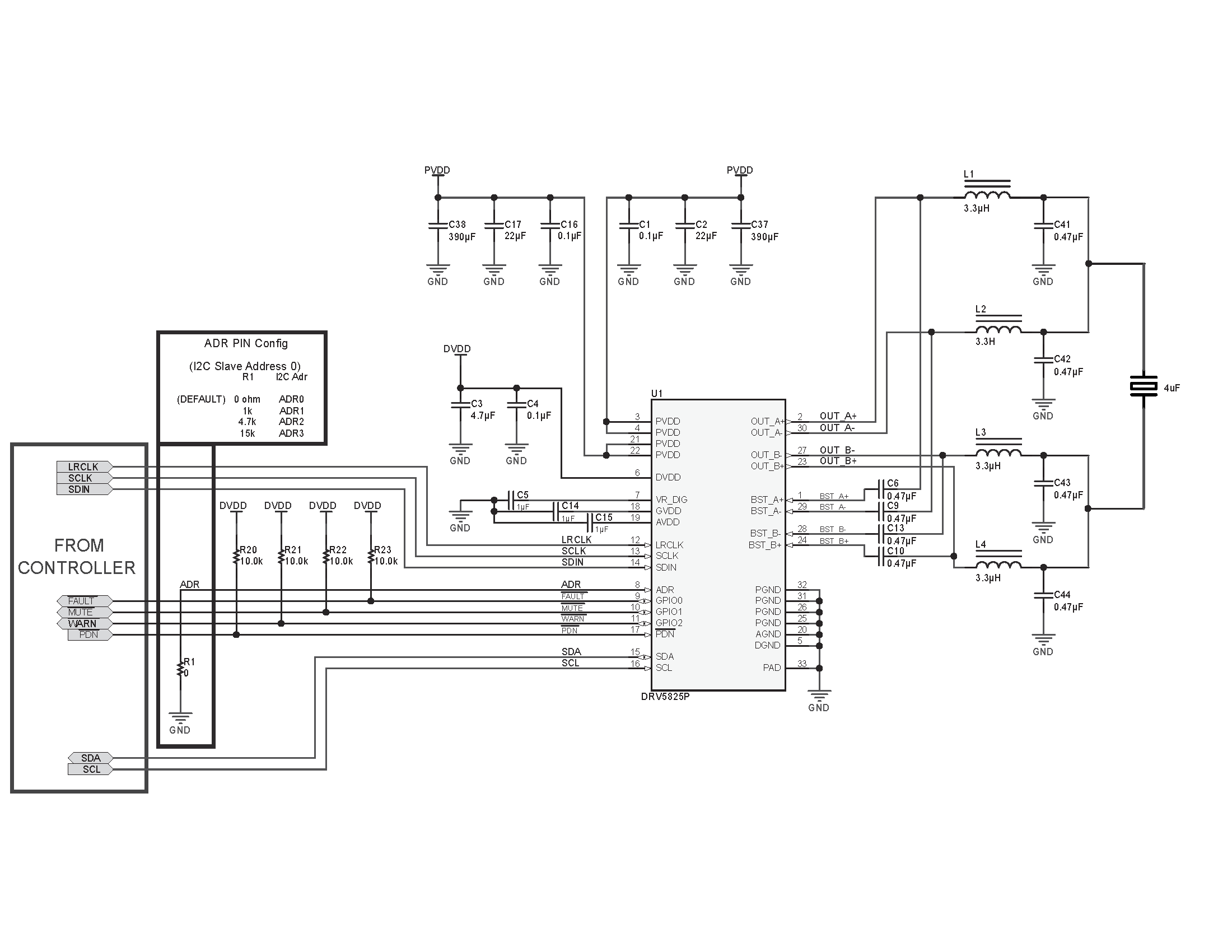ZHCSLS8 August 2020 DRV5825P
PRODUCTION DATA
- 1 特性
- 2 应用
- 3 说明
- 4 Revision History
- 5 Pin Configuration and Functions
- 6 Specifications
- 7 Typical Characteristics
-
8 Detailed Description
- 8.1 Overview
- 8.2 Functional Block Diagram
- 8.3 Feature Description
- 8.4 Device Functional Modes
- 8.5 Programming and Control
- 8.6 Register Maps
- 9 Application and Implementation
- 10Power Supply Recommendations
- 11Layout
- 12Device and Documentation Support
9.2.4 MONO (PBTL) Systems
In MONO mode, DRV5825P can be used as PBTL mode to drive sub-woofer with more output power.
 Figure 9-2 MONO (PBTL) Application
Schematic
Figure 9-2 MONO (PBTL) Application
SchematicTable 9-3 Supporting Component
Requirements for Sub-woofer (PBTL) Systems
| REFERENCE DESIGNATOR | VALUE | SIZE | DETAILED DESCRIPTION |
|---|---|---|---|
| C37,C38 | 390uF | 10mmx10mm | CAP, AL, 390 μF, 35 V, +/- 20%, 0.08 ohm, SMD |
| C1, C16 | 0.1 µF | 0402 | CAP, CERM, 0.1 F, 50 V, ±10%, X7R, 0402 |
| C2, C17 | 22 µF | 0805 | CAP, CERM, 22 µF, 35 V, ±20%, JB, 0805 |
| C3 | 4.7 µF | 0603 | CAP, CERM, 4.7 µF, 10 V, ±10%, X5R, 0603 |
| C4 | 0.1 µF | 0603 | CAP, CERM, 0.1 µF, 16 V, ±10%, X7R, 0603 |
| C5,C14,C15 | 1 µF | 0603 | CAP, CERM, 1 µF, 16 V, ±10%, X5R, 0603 |
| C6,C9,C10,C13 | 0.47 µF | 0603 | CAP, CERM, 0.47 µF, 16 V, ±10%, X7R, 0603 |
| C41,C42,C43,C44 | 0.47 µF | 0805 | CAP, CERM, 0.47 µF, 50 V, ±10%, X7R, 0805 |
| L1,L2,L3,L4 | 3.3 µH | Inductor, Shielded, 3.3 μH, 8.7 A | |
| R1 | 0 kΩ | 0402 | RES, 0, 5%, 0.063 W, 0402 |
| R20,R21,R22,R23 | 10 kΩ | 0402 | RES, 10.0 k, 1%, 0.063 W, 0402 |